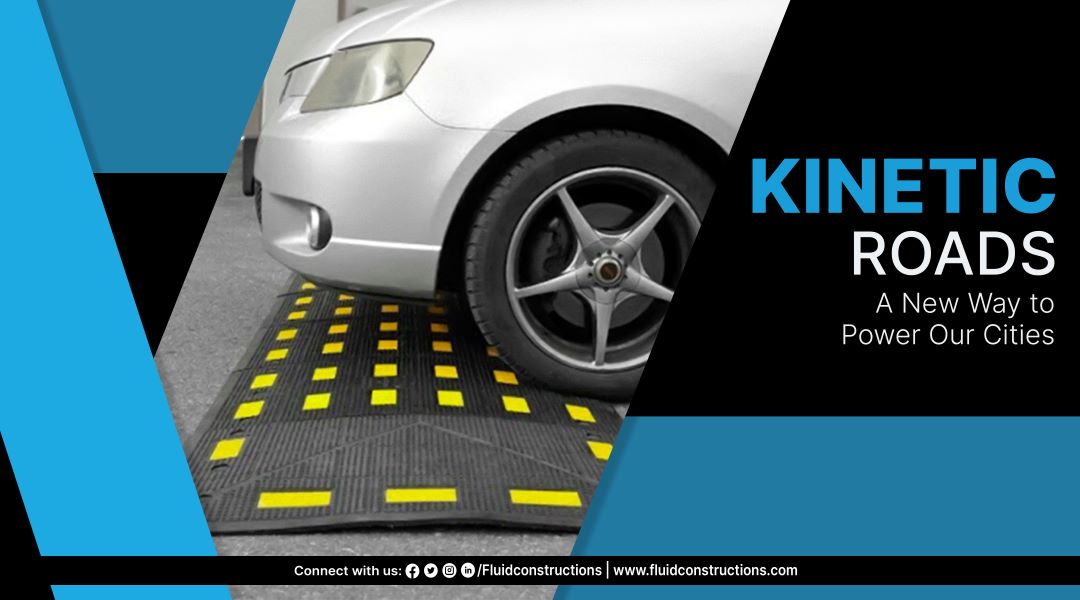
Kinetic Roads: A New Way to Power Our Cities
In light of the increasing environmental impacts of automobile movements, electric energy is fast replacing fossil-based energy as the principal driving power. The kinetic road presents an alternative source of electrical energy to supplement the energy requirement for transportation infrastructure, such as EV recharge stations, road lighting, signage, etc.
Roadway pavement occupies large portions of urban and rural areas, covering millions of square kilometers, and is constantly exposed to traffic-induced pressures. This makes the roads an excellent source of kinetic energy due to the constant movements of vehicles over them.
What is the Concept of Kinetic Road?
While a road doesn’t generate any kinetic energy, the vehicles that run over it do. Kinetic road technology uses the kinetic energy accrued by vehicles to generate electricity. This is done by installing an energy ramp under the road. The energy ramp consists of an energy conversion assembly that sits underground and a ramp embedded in the road surface.
The majority of the kinetic energy in an automobile is lost as heat when it passes a road breaker. The fundamentals of kinetic road technology are based on harvesting this energy for conversion into electricity. The electricity thus generated can be stored or transmitted as required.
When a moving vehicle passes over the ramp, the vertical force from the ramp compresses a piezoelectric material, which in turn causes multiple pumping movements that finally run a generator to produce electricity. In this way, the kinetic energy generated by the speeding vehicles gets converted into electrical energy. The energy ramps can be installed at many points along the road.
The kinetic road is one of those new technologies of today that harvests different types of energy produced on roads to generate green electrical energy. Currently, India has over 1,45,240 km of national highways and a massive length of state highways and other roads that account for a huge amount of wasted kinetic energy that occurs on pavements.
The system’s research reveals that at 16,949 vehicles per hour on the road, it has a 2 MW power-generating capacity, of which 8 MWh of usable energy may be obtained in a day with continuous traffic flow.
Impact of Kinetic Roads on Environment
Harnessing Kinetic Energy:
Kinetic roads have a simple yet brilliant concept: they convert the kinetic energy that moving cars produce into electrical energy. These roads’ embedded piezoelectric materials transform mechanical energy from moving cars into a clean, renewable energy source. When a vehicle passes over the embedded piezoelectric sensors on these roads, electrical energy is produced. Numerous uses for this energy exist, such as grid recharging and powering street lights and traffic signals.
Reducing Carbon Footprint:
Kinetic roads’ main benefit is their ability to lower carbon emissions. Kinetic roads actively support the energy grid, minimising the need for additional power from conventional sources, in contrast to traditional roadways, which are essentially passive structures that act as vehicle highways. In order to minimise transportation’s negative environmental effects while lowering dependency on fossil fuels, kinetic roads harness the energy produced by normal vehicle traffic.
Sustainable Infrastructure:
Kinetic roads are a major advancement in infrastructure development and urban planning for sustainable development. These roads have the capacity to generate electricity in addition to supporting ecologically friendly building practices. Using eco-friendly construction methods and recycled materials to create kinetic road components are two ways to make infrastructure development more sustainable.
Challenges and Considerations:
Although kinetic roads have a lot of potential, there are still some problems that need to be fixed before they can be used extensively. For instance, kinetic road technology may initially prove to be too costly for many municipalities to adopt. Advocates assert, however, that eventually the energy savings and lower maintenance costs balance the initial investment.
Benefits of the Kinetic Roads
- These roads emit no pollution and can create an infinite quantity of energy and power
- These roads are low-cost and require little upkeep. The construction of these roads may be expensive at first, but it will be cost-effective in the long run
- Because the roadways are pre-cast with these kinetic materials, no manual labour is necessary during the process. These roads are built similarly to interlocking concrete block pavements
- Because constant monitoring is eliminated, no gasoline is consumed in transportation. Furthermore, unlike flexible pavements, these roads do not require stoning, dusting, or macadam work and are hence labour-free
- These roadways, if they wear down over time, can be quickly replaced in a matter of minutes. As a result, they do not obstruct traffic for an extended period. As a result, time is saved
- Throughout the year, these roads use less energy. The energy generated by these roadways is tremendous and valuable for other forms of activity as well
Conclusion
The ever-increasing global population and the need to address all modern living requirements in sustainable ways are constantly pushing the demand for pollution-free energy on a global scale. Although conventional sources of energy are still prevalent due to many types of issues, attempts are being made to find ways to generate green energy and reduce emissions.
Kinetic Road technology offers the generation of green energy at a very economical cost, without using any natural resources. Converting traffic jams into electricity can be a significant milestone in the government’s urbanisation drive.
